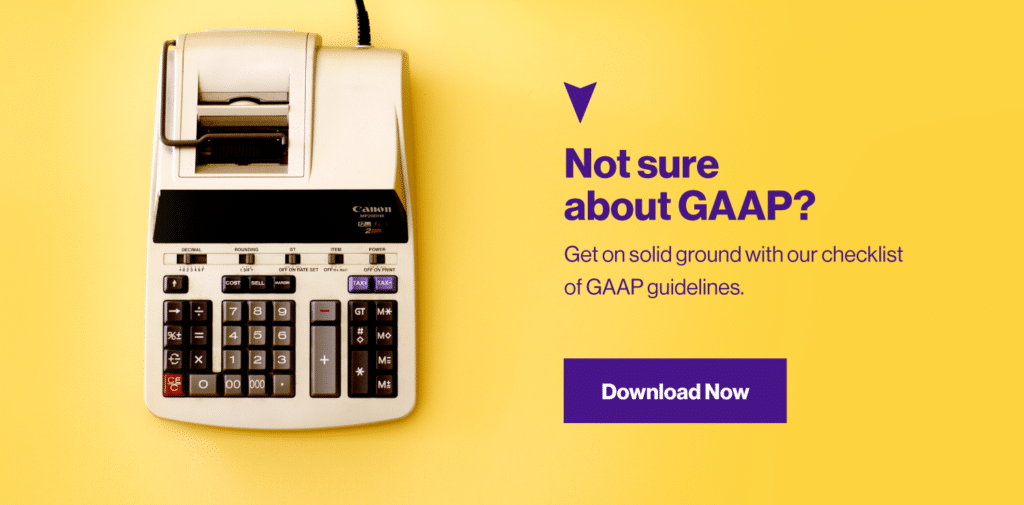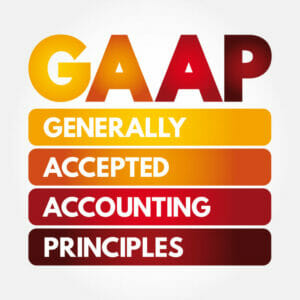For an executive or business owner, keeping up to date with accounting regulations is low on the to-do list. However, you should make an exception for “Accounting Standards Codification Topic 606: Revenue from Contracts with Customer” often referred to as ‘ASC 606’ or ‘FASB ASC 606’.
What Is ASC 606?
Developed by the International Accounting Standards Board (IASB), ASC 606 establishes new rules for recognizing revenue in contracts with customers. The new standard significantly changes how companies recognize and report their revenue. It impacts how and when your company can count customer payments. It is mandatory for organizations that use Generally Accepted Accounting Principles (GAAP).

Is ASC 606 Part of GAAP?
If your company uses GAAP accounting, ASC 606 could drastically alter your accounting practices and financial situation. The new standard’s primary impact is on revenue recognition, how an organization determines when it makes money.
A company based on a cash accounting system will earn revenue when it receives cash, not before or after. Under GAAP, a company doesn’t necessarily recognize revenue when cash changes hands. Instead, the company records revenue when the transaction occurs. A GAAP-compliant entity will treat a sale as a sale regardless of when it receives the money.
ASC 606 creates a framework within GAAP for recognizing revenue from customer contracts.
The aim is to standardize and streamline the accounting of contract-based transactions, which, before ASC 606, was a variable process. It differed from organization to organization, industry to industry. As a result, it could be difficult to get a sense of a company’s revenue from contracts or to compare one company’s transactions to another’s.

To comply with ASC 606, an organization must follow five steps:
1. Identify the contract with a customer.
Your agreement with your customer must contain specific criteria, or it will not be considered a contract under ASC 606. These criteria are; approval and commitment of the parties, identification of each party’s rights and obligations, payment terms, commercial substance, and collectability of consideration. These also apply to contracts created verbally or through the conduct of the parties involved.
2. Identify the performance obligations in the contract.
Performance obligations are distinct products or services that will be transferred to the customer as part of the agreement. This step may significantly impact companies in the subscription or software licensing industries.
For example, if you sell a license for your product to Customer A and also sell a service as part of that agreement (consulting or on-site training), should these be treated as separate obligations or grouped into one?
One solution is to see if the customer can purchase the product or service separately. If Customer A can benefit from the service without buying the license, the service can be considered a separate performance obligation.
3. Determine the transaction price.
The transaction price is the total ‘consideration’ you will receive from the customer once a performance obligation is satisfied.
FASB ASC 606 states that Consideration can be fixed but also contain a variable element and is not limited to cash. For any variable consideration, the business may have to estimate how much they expect to receive from the customer in a future period and factor that into the price.
4. Allocate the transaction price to the separate performance obligations.
This allocation can take place based on the individual sales price for each obligation. You’ll need to include an estimate in the contract if you can’t identify the price for a performance obligation.
5. Recognize revenue when the entity satisfies each performance obligation.
You will need to assign a ‘measure’ to each performance obligation on the contract before you can begin recognizing revenue. The primary requirement for a measure is to demonstrate a transfer of control from your company to the customer, either at a point in time or over time.
You can categorize measures based on whether they rely on tracking output from your company or tracking the work your company contributes to a project. An example of an input measure would be a contract to provide 100 hours of consulting to a customer. Your company would recognize the revenue for each billable hour logged against this project. Using units delivered as a percentage of total units ordered would be an output measure.

What is ASC 606 revenue recognition?
While that process may seem simple and standardization may sound like a good thing, ASC 606 can be exceedingly complicated. A company will have to look at every single customer agreement (written and unwritten) and pick it apart to determine financial particulars.
This process will be time- and resource-intensive if the company has:
- multiple contracts
- multiple kinds of contracts
- highly detailed contracts
- multiple products and services
- complex or flexible product/service delivery models
- a product or service that is regularly updated
Some organizations are less equipped than others for ASC 606. Consider an enterprise business-to-business SaaS provider, for instance. This company has hundreds of contracts, each one tailored to the client’s individual needs and specifications. Users are paying for a software platform and support and consulting services. Some are opting out of features that others have chosen to purchase. Payment terms may be all over the map.
A transaction price must be allocated to every performance obligation in every contract for this company to comply with the ASC 606 revenue recognition process. This process could take hundreds of hours and involve complex and uncertain accounting decisions.
The ASC 606 Effective Date Has Passed
The FASB may have initially deferred the ASC 606 Effective Date due to the Covid pandemic, but your business should already be well on its way to full compliance.
It can be challenging for an organization to choose between the costs of compliance and the potentially higher costs of non-compliance. Fortunately, you don’t have to do it alone. Your accounting partner can take the lead and help you ensure you’re following the new revenue recognition rules, meaning you can focus on more important things.
Have questions or concerns about what this revenue recognition standard means for your company? Ask us about implementing ASC 606.
